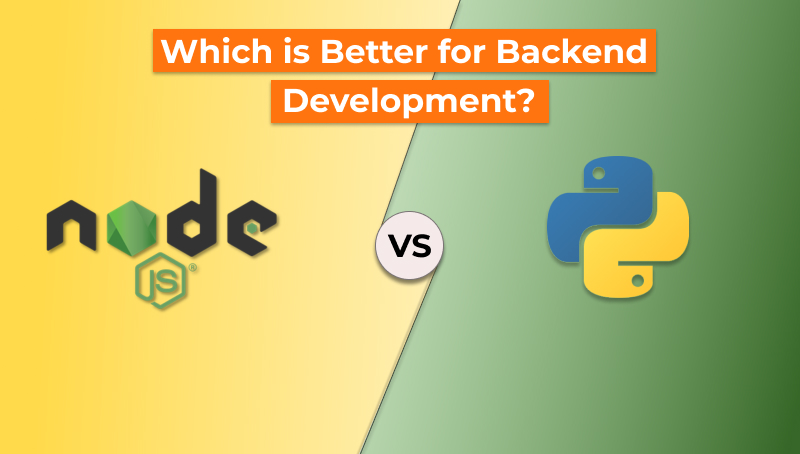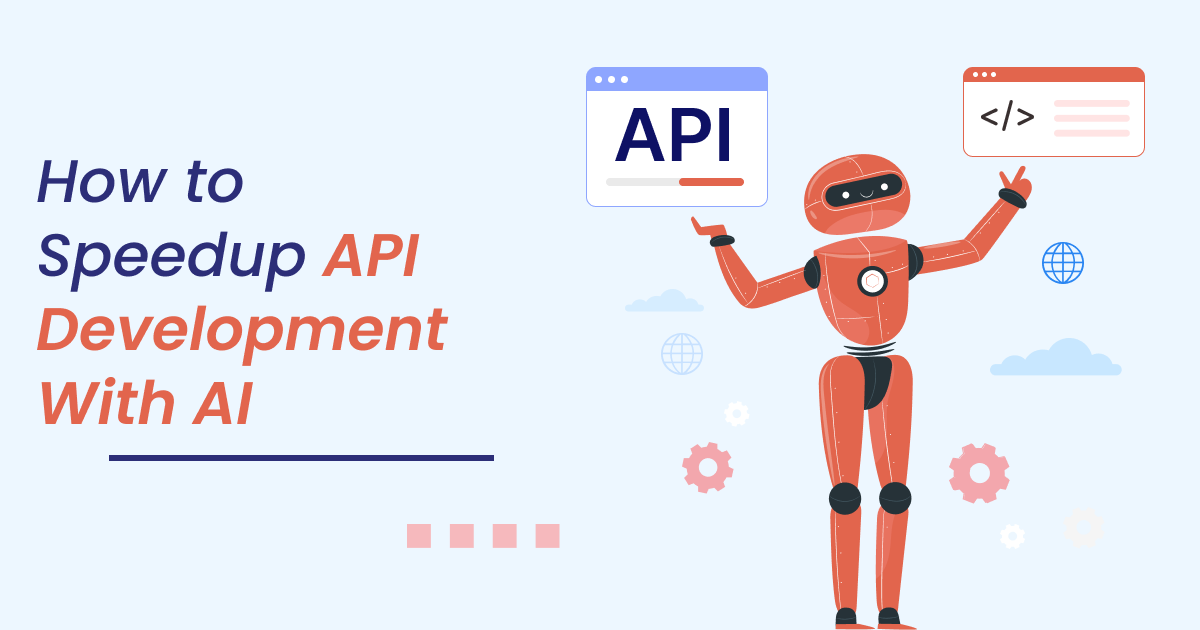We will thoroughly compare NodeJs vs Python in this blog to determine which is better for backend development and the circumstances in which one would be preferable to the other so that you can make the best decision for your backend.
The programming world is like a modern jungle. Various languages coexist, each with its unique characteristics, strengths, and weaknesses. Then, of course, it should also have a king of the jungle.
Just as certain species may dominate a specific region in a jungle, some programming languages enjoy significant popularity and widespread adoption in particular industries or application domains.
Regarding backend development, NodeJs and Python are constant contenders for the survival of the fittest. But who will emerge as the king?
What is Python?
Our first contender, Python, is a high-level, object-oriented programming language known for its versatility. It has become widely used for building dynamic web, mobile, and desktop applications. The language provides a rich collection of libraries and packages that facilitate development.
Python’s strength lies in its support for various programming standards and its user-friendly nature. As described by its creator, Python’s charm lies in its short, readable, and concise class structures that are highly effective.
Unlike complex and convoluted code, Python’s simplicity makes it enjoyable for developers and easy to understand for readers.
Python’s syntax and dynamic typing make it well-suited as a programming language for scripting purposes. Python provides an open-source app development platform with highly productive libraries, making the development process easier and more efficient.
Pros
Here. we’ll review some characteristics that might help Python outlast other species of the programming jungle:
- Quick Development – Readability and quick code interpretation speed up development, requiring less code and facilitating the creation of fast applications.
- Flexibility – Enables smooth integration with diverse programming languages and platforms like .NET, C#, C, and others during product development.
- Vast libraries – Simplifies application development, covering games, web development, machine learning, and more, with reusable code for custom projects.
- Simplicity – Due to its conversational syntax, Python ensures code files are easily readable, allowing developers to grasp simple tasks within 10 to 30 minutes.
- AI and ML opportunities – Python provides numerous built-in AI libraries, such as Pylearn2, Tensorflow for neural networks, and Scikit-learn for data analysis.
Cons
Some characteristics which do not work in Python’s favor:
- Incompatible with Mobile App Development – Lacks compatibility with mobile app development, as it is not favored for native app development and is unsupported by iOS and Android platforms.
- Execution Speed – It is relatively slower than certain programming languages, as its line-by-line code execution leads to slower overall performance in web applications.
- Memory Exhaustion – Its high memory consumption can harm web application performance, impacting the quality of solutions.
What is NodeJs?
Node.js is a widely recognized open-source JavaScript runtime environment that poses a significant challenge to Python. It has gained immense popularity and is considered one of the leading frameworks for web development. It includes built-in optimizers, interpreters, and compilers and utilizes Google’s powerful V8 engine.
Developers appreciate Node.js’s versatility, allowing them to build client and server-side network applications. Its rich tech stack and robust ecosystem contribute to the creation of scalable and high-performance apps. Additionally, Node.js resolves the dilemma between client-side and server-side development, making it suitable for both purposes.
Notably, even some of the fastest JavaScript frameworks, like TezJS, utilize Node.js for development setups and to manage type-friendly environment variables effectively for both the client and server sides.
This versatility and efficiency explain why enterprises often choose Node.js over other backend technologies for large-scale and complex application development projects.
Pros
Let’s review some of the redeeming qualities of our defending champion:
- Flexibility for Microservices development – Package manager and microservice architecture streamline development, allowing multiple module executions and simplified testing and quality control for organizations.
- Strong technical stack – Full access to the JavaScript stack and resources, backed by a strong community, facilitating app development with the MEAN technical stack for scalable front-end and back-end support.
- Cost-efficiency – Compatibility with front-end and back-end development saves costs, accelerates development, and maintains application quality without needing separate resources.
- Fast event-based model – Surpasses Java, PHP, and Go in speed, delivering quick responses to user actions like button clicks for page presentation, messaging, and content display.
- Rich Ecosystem – NPM, the package manager for Node.js, contains a wide array of open-source JS plugins, with over 840,000 libraries utilized by JS and Node.js developers in more than 97% of web applications.
Cons
Now, let’s take a look at some of the pitfalls of betting on NodeJs:
- Unstable API – Node.js suffers from frequent API switches, resulting in backend incompatibilities that make it unstable as developers need to make continuous code changes.
- Callback Hell – Its asynchronous nature leads to “callback hell,” causing nested callback functions that decrease code quality and make it challenging to solve and maintain.
- Performance Issues – Based on JavaScript syntax with low CPU consumption, it encounters inconsistencies with high-load CPU processes in backend development, affecting performance and developer capabilities.
- Immature tools – Less popular NPM modules may need more quality, suffer from bugs, and need more documentation due to a quantity-over-quality update approach as an open-source platform.
How to decide the king: Python vs. NodeJs
A comparative overview of the two languages can be summarised as
| Criteria | NodeJs | Python |
| Speed | Fast speed, which is attributed to the V8 engine, event-driven arch, and single-module caching | It has slow execution due to a single flow of code. |
| Performance | Provides high performance in comparison to Python | Many powerful frameworks but less powerful on the web backend. |
| Architecture | Event-driven with asynchronous I/O, making it ideal for chat apps and web games. | It is synchronous. It is not event-driven but can be enabled using modules like CPython. |
| Syntax | Similar to the browser’s JS | Simple and compact |
| Scalability | Easily scalable: horizontally and vertically, in terms of typing | Not easily scalable |
| Readability | Callback hell negatively impacts readability. | Allows highly readable code. |
| Extensibility | New frameworks like Babel, Jasmin, Log.io, Webpack | Many tools and frameworks like Robot, Flask, Web2py, and Django. |
| Libraries | Fast, reliable, and easy-to-understand libraries that are managed with NPM. Massive documentation for a smooth learning curve. | Pip package manager, extensive documentation, clean and compact mode. It supports quick and efficient development. |
| Universality | It is a JS tool famous for frontend and backend development. Used for web, desktop, and mobile. | It can be used for backend development only in web, desktop, and mobile. |
| Error Handling | Multitasking features to make it easier to handle and solve errors and fix bugs during application development. | The simplest code and syntax make solving the error-handling problem more convenient. |
| Learning | Easy with pre-existing knowledge of JS | Simple with some technical knowledge. |
| Interpreter | JavaScript interpreter | PyPy interpreter |
| Project Suitability | Best for memory-intensive process | Best for large project development |
| Application | Highly preferred for real-time app development | Highly preferred for complex software development related to AI/ML and scientific computation. |
| Community | A very active programming community | Very large community contributing to online resources |
| Use Cases | IoT solutions, chatbots, streaming services, and content management systems. | Big Data, DevOps and testing automation, 3D modeling software, games, etc. |
| Examples | LinkedIn, PayPal, Netflix | Reddit, Google, Facebook |
The Verdict
A jungle presents challenges for survival, such as predators, limited resources, and harsh environments. Similarly, developers face challenges when selecting the right programming language for a project, considering factors like performance, scalability, and community support.
Nevertheless, these challenges are opportunities for growth and innovation. They promote the likelihood of delving into different programming languages, allowing developers to expand their skill sets, discover unique features, and learn new ways of solving problems.
In summary, comparing programming languages to a modern-day jungle underscores the richness and complexity of the programming world. Just as each species plays a vital role in maintaining the ecological balance of a jungle, each programming language contributes to the diverse and vibrant landscape of software development. The key lies in choosing the right language that aligns with the project’s requirements and objectives, ensuring successful navigation through the programming jungle.







